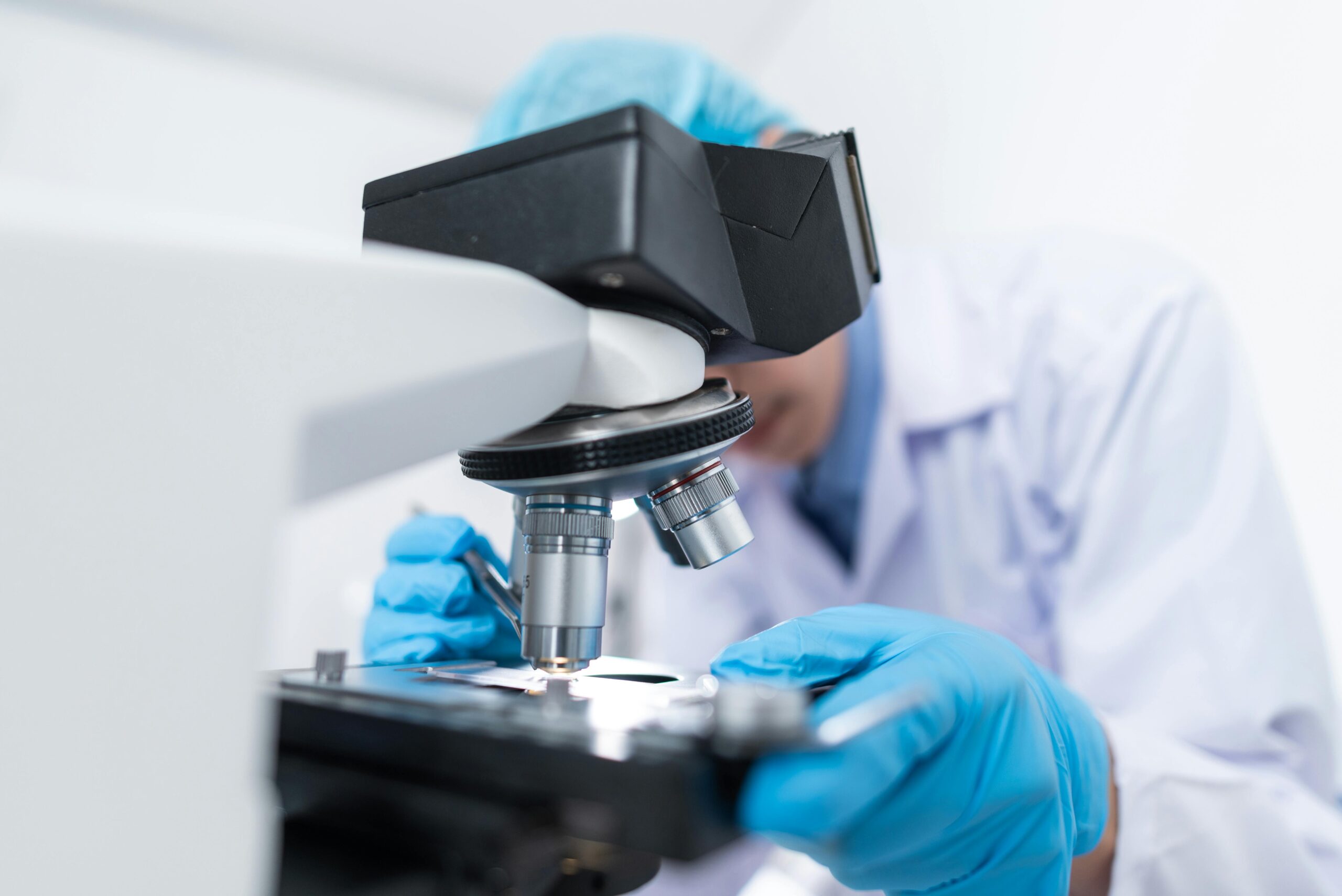The convergence of gene editing technologies and cellular reprogramming is revolutionizing how we approach human health, opening unprecedented possibilities for treating previously incurable conditions.
For centuries, medicine has focused primarily on managing symptoms rather than addressing the root causes of disease. Today, regenerative medicine powered by CRISPR, induced pluripotent stem cells, and advanced cellular therapies is fundamentally changing this paradigm. Scientists are no longer merely treating damage—they’re rewriting the biological code itself, unlocking nature’s own blueprint for healing and restoration.
🧬 The Foundation: Understanding Gene Editing’s Revolutionary Impact
Gene editing technologies, particularly CRISPR-Cas9, have transformed from theoretical concepts into practical clinical tools within just a decade. This molecular scissors approach allows researchers to precisely cut, modify, or replace specific DNA sequences with unprecedented accuracy. Unlike earlier gene therapy attempts that often resulted in unpredictable outcomes, modern gene editing offers precision that was unimaginable even fifteen years ago.
The implications extend far beyond simple genetic corrections. Scientists are now exploring how gene editing can enhance the body’s natural regenerative capabilities, activate dormant healing pathways, and even reverse age-related cellular decline. This represents a fundamental shift from treating symptoms to addressing the underlying genetic and cellular mechanisms of disease.
Recent clinical trials have demonstrated remarkable success rates in treating genetic blood disorders like sickle cell anemia and beta-thalassemia. Patients who previously required lifelong blood transfusions are now experiencing complete remission after a single treatment. These breakthrough results validate decades of research and investment in gene editing technologies.
Precision Medicine Meets Personalized Therapy
The marriage between gene editing and regenerative medicine creates opportunities for truly personalized treatments. Each patient’s unique genetic profile can now inform customized therapeutic strategies. This precision approach minimizes side effects while maximizing efficacy, representing a dramatic departure from the one-size-fits-all pharmaceutical model.
Biotech companies and research institutions worldwide are developing sophisticated platforms that combine genomic sequencing, artificial intelligence, and gene editing tools to design patient-specific interventions. These platforms can identify genetic vulnerabilities, predict treatment responses, and optimize therapeutic protocols before any clinical intervention occurs.
🔬 Cellular Reprogramming: Turning Back the Biological Clock
Induced pluripotent stem cells (iPSCs) represent one of regenerative medicine’s most significant breakthroughs. By reprogramming adult cells back to an embryonic-like state, researchers can generate virtually any cell type needed for therapeutic purposes. This technology eliminates ethical concerns associated with embryonic stem cells while providing an unlimited supply of patient-matched cells.
The reprogramming process involves introducing specific transcription factors that reset a cell’s identity. A skin cell, for example, can be transformed into a neuron, cardiac muscle cell, or insulin-producing pancreatic beta cell. This remarkable plasticity opens doors to treating conditions ranging from Parkinson’s disease to heart failure and diabetes.
Recent advances have made cellular reprogramming faster, more efficient, and safer. Researchers have discovered methods to reprogram cells without genetic modification, using small molecules and transient protein delivery instead. These non-integrating approaches reduce potential risks associated with permanent genetic alterations.
Direct Reprogramming: Shortcuts in Cellular Identity
Beyond iPSCs, direct reprogramming converts one mature cell type directly into another without passing through a pluripotent state. This approach offers several advantages: faster conversion times, reduced cancer risk, and preservation of age-related epigenetic markers that may be important for proper function.
Scientists have successfully converted fibroblasts directly into neurons, cardiomyocytes, and hepatocytes using defined sets of transcription factors. These directly reprogrammed cells maintain functional characteristics appropriate for their new identity and can integrate into existing tissues more seamlessly than laboratory-expanded stem cells.
💉 Clinical Applications Transforming Patient Care
The translation of gene editing and cellular reprogramming from laboratory bench to hospital bedside is accelerating rapidly. Multiple clinical trials are currently evaluating these technologies across diverse medical specialties, with several therapies already receiving regulatory approval in various jurisdictions.
Ophthalmology has emerged as an early success story for regenerative medicine. Gene therapies targeting inherited retinal diseases have restored vision in patients who were previously destined for blindness. Similarly, cellular therapies using retinal pigment epithelium cells derived from stem cells are showing promise for treating age-related macular degeneration.
Cardiology represents another frontier where regenerative approaches are making meaningful impacts. Researchers are developing methods to regenerate damaged heart muscle following myocardial infarction, potentially eliminating the need for heart transplants in many patients. Gene-edited cardiac progenitor cells can be delivered directly to damaged tissue, where they integrate and restore contractile function.
Neurological Disorders: Addressing the Previously Untreatable
The central nervous system’s limited regenerative capacity has historically made neurological conditions particularly challenging to treat. Gene editing and cellular reprogramming are changing this landscape dramatically. Clinical trials are underway for conditions including:
- Parkinson’s disease using dopamine-producing neurons derived from iPSCs
- Spinal cord injury employing oligodendrocyte progenitors to restore myelin
- Alzheimer’s disease targeting genetic risk factors like APOE4
- Huntington’s disease using CRISPR to silence the mutant huntingtin gene
- Amyotrophic lateral sclerosis (ALS) with gene-corrected motor neurons
Early results from these trials demonstrate safety and preliminary efficacy signals, generating cautious optimism among clinicians and patients alike. The ability to replace lost neurons or correct genetic defects in the brain represents a paradigm shift in neurology.
🏥 Manufacturing Challenges and Scalability Solutions
Despite tremendous scientific progress, translating regenerative medicine therapies into widely accessible treatments requires overcoming significant manufacturing and logistical challenges. Current cellular therapy production relies heavily on manual processes performed in specialized facilities, creating bottlenecks that limit patient access and drive costs skyward.
Each patient-specific therapy can cost hundreds of thousands or even millions of dollars, placing these treatments out of reach for most healthcare systems and patients. The industry is actively developing automated manufacturing platforms, closed-system bioreactors, and standardized protocols to reduce costs and increase throughput.
Off-the-shelf allogeneic approaches using universal donor cells offer one potential solution. By using gene editing to remove immunogenic markers, researchers are creating “universal” cells that can be administered to any patient without rejection. This approach enables economies of scale that dramatically reduce per-patient costs.
Quality Control and Regulatory Frameworks
Ensuring consistent quality across batches of living cellular products presents unique challenges compared to traditional pharmaceuticals. Regulatory agencies worldwide are developing specialized frameworks for evaluating these novel therapies, balancing the need for rigorous safety standards with the urgency of delivering treatments to patients with life-threatening conditions.
Advanced analytics including genomic sequencing, flow cytometry, and functional assays are being implemented to characterize cellular products comprehensively. These quality control measures verify that manufactured cells possess the desired characteristics and lack unwanted properties like tumor-forming potential.
⚖️ Ethical Considerations and Societal Implications
The power to edit human genes and reprogram cellular identities raises profound ethical questions that society must thoughtfully address. Where should we draw boundaries around genetic modification? Who decides which conditions warrant intervention? How do we ensure equitable access to these potentially life-saving technologies?
Germline editing—modifications that would be passed to future generations—remains particularly controversial. While somatic cell editing affects only the treated individual, germline changes would alter the human gene pool permanently. Most countries currently prohibit germline editing for clinical purposes, though the technology exists to perform such modifications.
The possibility of enhancement rather than merely treatment also generates vigorous debate. Should gene editing be limited to correcting disease-causing mutations, or could it legitimately be used to enhance human capabilities? These questions lack simple answers and require ongoing societal dialogue involving diverse stakeholders.
Access and Health Equity
Perhaps the most pressing ethical concern involves ensuring that regenerative medicine benefits humanity broadly rather than becoming available only to wealthy individuals in developed nations. The enormous development costs and sophisticated infrastructure requirements risk creating a two-tiered system where advanced therapies remain inaccessible to most populations.
International cooperation, innovative financing models, and technology transfer initiatives will be essential for democratizing access to regenerative medicine. Some organizations are exploring strategies like tiered pricing, generic manufacturing licenses, and capacity building in lower-resource settings.
🚀 Future Horizons: What’s Coming Next
The field of regenerative medicine is advancing at breathtaking speed, with innovations emerging continuously that expand therapeutic possibilities. Several exciting developments on the horizon promise to amplify the impact of gene editing and cellular reprogramming even further.
Base editing and prime editing represent next-generation gene editing technologies offering even greater precision than CRISPR-Cas9. These approaches can change single DNA letters or insert genetic sequences without creating double-strand breaks, potentially reducing unwanted side effects while expanding the range of correctable mutations.
In vivo reprogramming—inducing cellular transformation directly within the body rather than in laboratory culture—could eliminate many manufacturing challenges. Early experiments in animal models have successfully reprogrammed cells inside living organisms, opening possibilities for simpler, more accessible therapies delivered through standard injections.
Artificial Intelligence Accelerating Discovery
Machine learning algorithms are becoming indispensable tools for navigating the immense complexity of biological systems. AI platforms can predict which genetic modifications will produce desired outcomes, identify novel reprogramming factor combinations, and optimize treatment protocols based on patient data patterns imperceptible to human observers.
These computational approaches dramatically accelerate the research cycle, compressing decades of trial-and-error experimentation into months or even weeks. As datasets grow larger and algorithms become more sophisticated, AI-driven discovery will likely become the dominant paradigm for developing new regenerative therapies.
🌍 Global Collaboration and Knowledge Sharing
Advancing regenerative medicine requires unprecedented collaboration across disciplines, institutions, and national borders. The complexity of these technologies demands expertise spanning molecular biology, bioengineering, computational science, clinical medicine, ethics, and regulatory affairs.
International consortia are forming to share data, standardize protocols, and coordinate clinical trials. These collaborative networks accelerate progress by preventing duplication of effort, pooling resources, and enabling larger studies than any single institution could conduct independently.
Open science initiatives are making research findings, protocols, and even proprietary technologies more accessible to the global scientific community. This transparency fosters innovation and ensures that breakthrough discoveries benefit humanity broadly rather than remaining locked behind intellectual property barriers.
🎯 Navigating the Path from Promise to Practice
While the potential of gene editing and cellular reprogramming is undeniable, realistic expectations about timelines and limitations remain important. Many proposed applications are still years or decades away from clinical reality. Scientific challenges persist, unexpected obstacles emerge regularly, and translating animal research to human therapies often proves more difficult than anticipated.
Patients and families affected by serious diseases understandably feel urgency for new treatments. However, rushing inadequately tested therapies to market risks serious harm and could undermine public confidence in this entire field. Balancing speed with safety requires wisdom, patience, and unwavering commitment to rigorous scientific standards.
The regenerative medicine community must also address the proliferation of unproven stem cell clinics offering treatments lacking scientific validation. These operations exploit desperate patients while potentially exposing them to serious risks. Educating the public about distinguishing legitimate clinical trials from unregulated interventions remains a critical priority.

🔑 The Blueprint for Tomorrow’s Medicine
Gene editing and cellular reprogramming are fundamentally transforming our relationship with biology, disease, and aging itself. By understanding and manipulating the molecular instructions that govern life, we’re unlocking therapeutic capabilities that previous generations could only imagine.
The journey from today’s early successes to a future where regenerative medicine routinely cures diseases and extends healthy lifespan will require sustained investment, creative problem-solving, and commitment to ethical principles. The technical challenges are formidable, but recent progress demonstrates that once-impossible goals are becoming achievable realities.
As these technologies mature and become more accessible, they will reshape not just medicine but society itself. The ability to edit genes and reprogram cells represents humanity’s most direct intervention yet into nature’s blueprint. Used wisely, these tools offer unprecedented opportunities to alleviate suffering and enhance human flourishing.
The future of regenerative medicine is being written today in laboratories and clinics worldwide. Each successful trial, each refined technique, and each patient whose life is transformed contributes to an emerging paradigm where healing comes not from external interventions alone, but from awakening the body’s own latent potential for renewal and regeneration. This is medicine’s next chapter—and it’s just beginning. 🌟
Toni Santos is a biotechnology storyteller and molecular culture researcher exploring the ethical, scientific, and creative dimensions of genetic innovation. Through his studies, Toni examines how science and humanity intersect in laboratories, policies, and ideas that shape the living world. Fascinated by the symbolic and societal meanings of genetics, he investigates how discovery and design co-exist in biology — revealing how DNA editing, cellular engineering, and synthetic creation reflect human curiosity and responsibility. Blending bioethics, science communication, and cultural storytelling, Toni translates the language of molecules into reflections about identity, nature, and evolution. His work is a tribute to: The harmony between science, ethics, and imagination The transformative potential of genetic knowledge The shared responsibility of shaping life through innovation Whether you are passionate about genetics, biotechnology, or the philosophy of science, Toni invites you to explore the code of life — one discovery, one cell, one story at a time.




